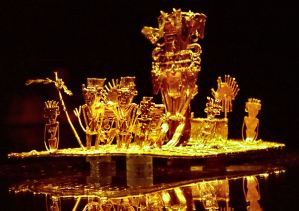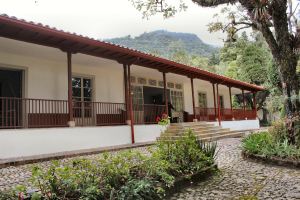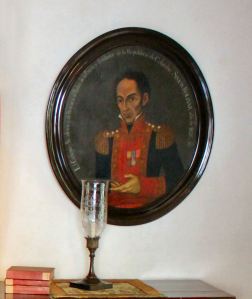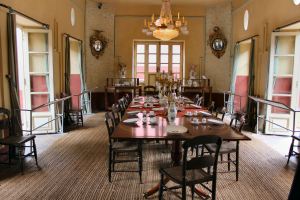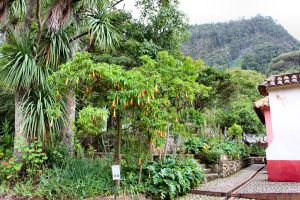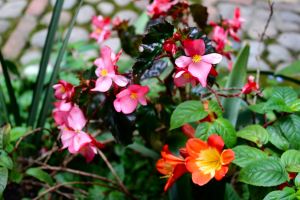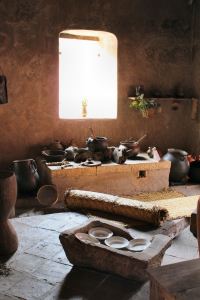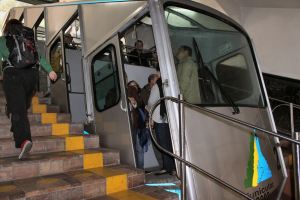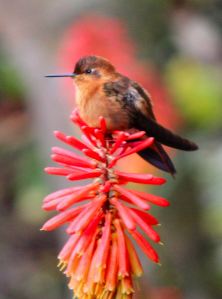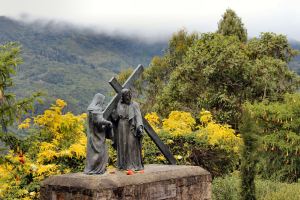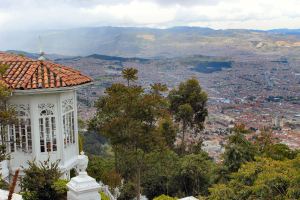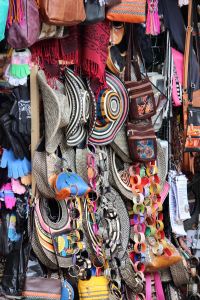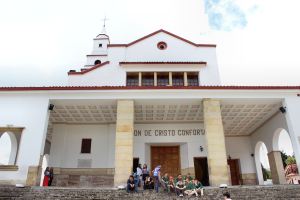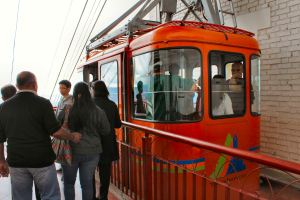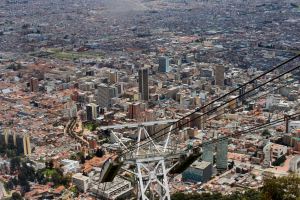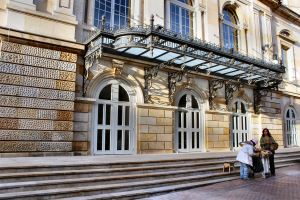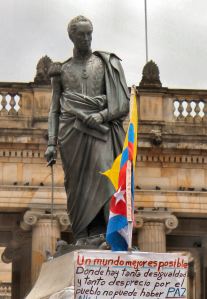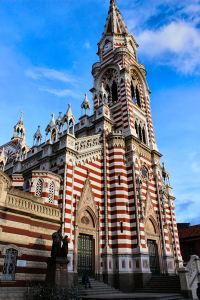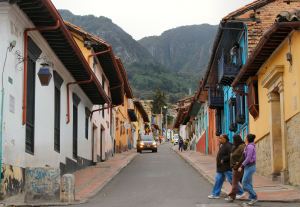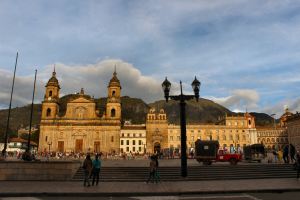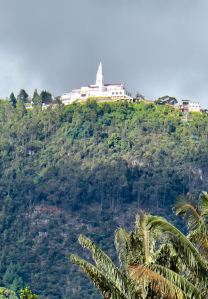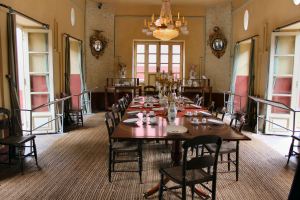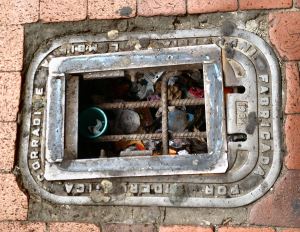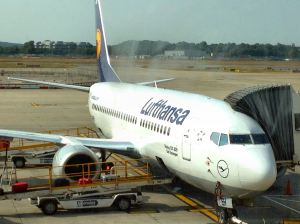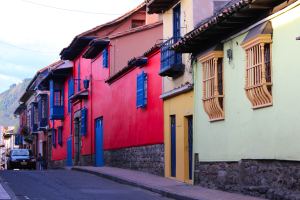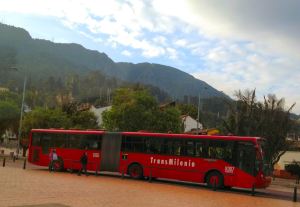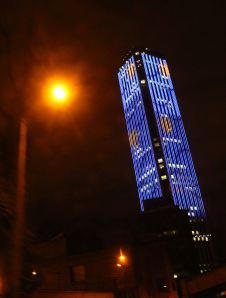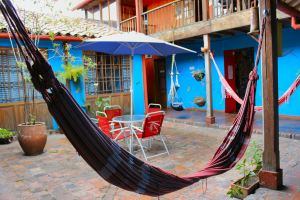Our itinerary, planned mostly from my bed back in Europe, included hiring a taxi from Bogotá to Lake Guatavita. But the evening before we were due to go, I was too ill to organise the taxi, too ill even to get to the reception desk of our hostel and ask them to organise it. Maybe Dr M was right – this trip was a crazy idea for someone in my state of health. Reluctantly, I had to accept defeat – I was too ill to go to Lake Guatavita
My disappointment at not being able to see the lake was a test of my acceptance of my illness. Our natural inclination is to push ourselves in our ‘can do’ culture. Acceptance is alien and difficult to master. I have partially accepted the bodily pain and physical illness that constantly accompany me and I try to get the maximum from life despite these unwanted companions that have denied me so much. But I struggled to accept that having travelled all this way and being so close to Lake Guatavita, I would not see it.
As I lay in bed feeling despondent, I thought of the advice in Toni Bernhard’s excellent book about coping with chronic illness – How to be Sick. Physical pain was unavoidable but I realised I did not have to add mental suffering to it in the form of disappointment. Although pain deprived me of a good night’s sleep, I began to let go of my disappointment. I lay in bed thinking about the wonderful things we had done so far and that were yet to come on this trip and was at least able to rest.
So why is Lake Guatavita so special? On the Altiplano Cundiboyacense, fifty kilometres northeast of Bogotá, this almost circular lake lies in a crater that forms a natural amphitheatre. Forested hills edge its circumference and guapucha fish swim in its emerald waters. But it is its history that makes it unique.
Lake Guatavita was the birthplace of the legend of El Dorado, ‘The Gilded One’. The legend refers not to a golden city but to a golden man.
‘He went about all covered with powdered gold, as casually as if it were powdered salt,’ wrote Spanish conquistador Gonzalo Fernández de Oviedo in the sixteenth century.
At the time of the conquest the area was inhabited by the indigenous Muisca people. In 1638 Juan Rodríguez Freyle chronicled the Muisca ceremony for appointing a new chief, or zipa. Naked but for a covering of gold dust, the new zipa embarked upon a great raft made of reeds. Gold and emeralds were piled at his feet and four chieftains adorned with feathers and gold accompanied him as oarsmen rowed him from the shores of the sacred lake to its centre.
As plumes of incense rose from braziers on the raft, the crowds gathered on the shores lit fires whose smoke obscured daylight. When the raft reached the centre of the lake, a chieftain raised a banner to signal silence and the zipa threw the gold and emeralds into the lake as his offering to the gods. After the chieftains made their own offerings, they lowered the banner to mark the end of the ceremony.
As the raft moved towards the shore, the crowds shouted their allegiance to the new zipa and began the celebrations with flutes, pipes and dancing.
The conquistadors spread stories of the ceremony throughout Spanish America and Europe until the golden man became a golden city that many sought in vain. While Europeans lusted after the promise of gold for its monetary value, the Muisca valued it for its spiritual properties: it reflected the sun’s light and colour and its worth lay in its efficacy as an offering made to renew life.
Just as El Dorado evaded the conquistadors who sought its gold and the various expeditions subsequently mounted to drain the lake for its treasures, now it evaded me.
I would have to imagine the ceremony as I later gazed upon a gold replica of the Muisca Raft at the Bogotá Gold Museum and count myself fortunate indeed to be able to do that.


